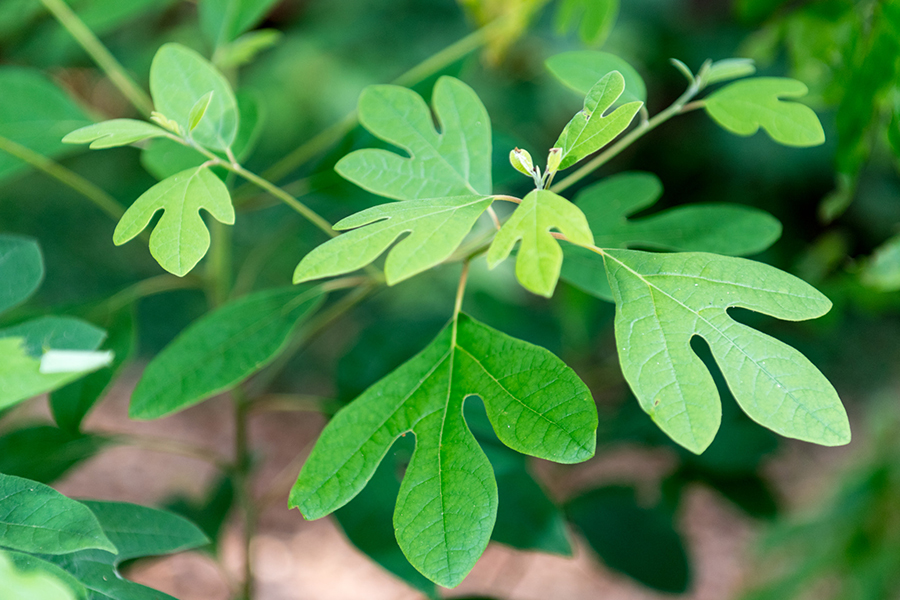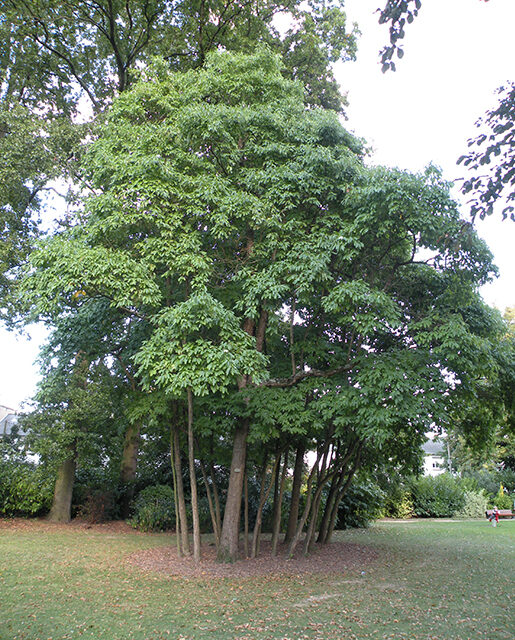Sassafras albidum
Sassafras is a deciduous tree native to eastern North America known for its distinctive leaf shape, reminiscent of a dinosaur’s foot. The tree is very aromatic and historically was used to flavor root beer!
Location
Perhaps the best location to spot a Sassafras is near the stone wall entrance to the arboretum on Lovell Street. Look down the East-West trail, along Lovell Street, and see if you can spot either of the two Sassafras trees nestled there.


History at Hadwen
In 1900, Hadwen notes the sassafrass as one of the many deciduous trees growing on his farm, “well worthy of planting.” The sassafrass is recorded again in documents from 1971, and 1978, before being recorded most recently in 2020.
Keep Learning
Detailed Species Information
Sassafras is a deciduous tree in the family Lauraceae native to eastern North America. Typically, it grows 35 feet (11 meters) in height and 12 inches (30 centimeters) in trunk diameter. The smooth bark is orange-brown or red-brown and furrowed. The most distinct characteristic of the sassafras is the leaves which are alternately arranged on the stem and have three different shapes: entire, mitten-shaped, and three-lobed. The most common leaf shape for sassafras is the three-lobed shape which is said to resemble the footprint of a dinosaur. The small, six-petaled flowers are yellow in color and the fruit is a dark blue drupe.
Sassafras can be found in a variety of habitats, including forest edges and fields. Sassafras is considered shade intolerant and thrives in rich, well-drained soils. Many parts of the sassafras tree provide food for wildlife, especially the fruits which are an important food source for birds such as phoebes, woodpeckers, and thrushes.
Sassafras is also known for its aromatic properties and was historically used as a flavoring agent in root beer. The roots and bark of the tree have been traditionally used to make tea which is believed to have medicinal properties. The wood of the tree is durable and pleasing in appearance and has been used to construct furniture in the past. In landscaping, the tree is often planted as an ornamental due to its unique leaves and strong aroma.
